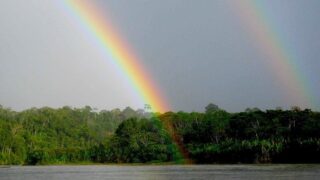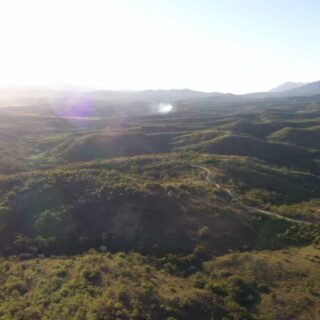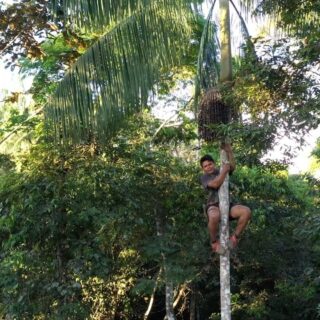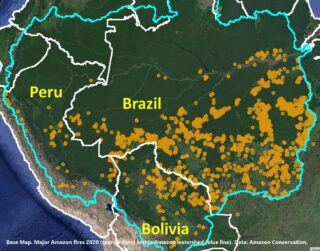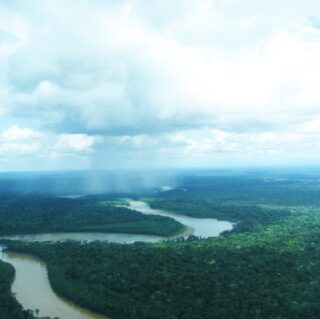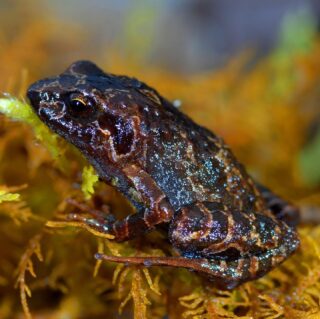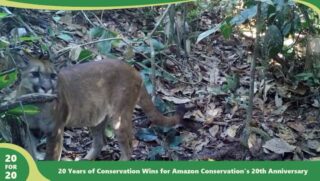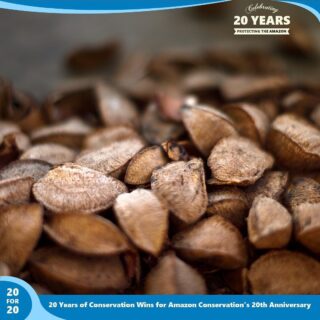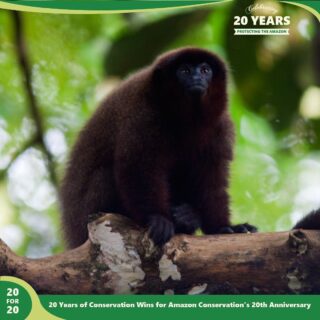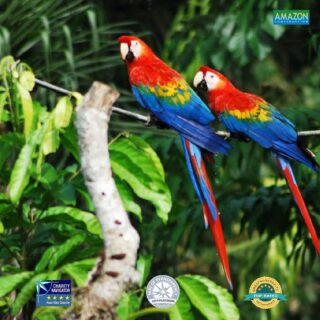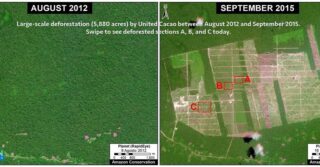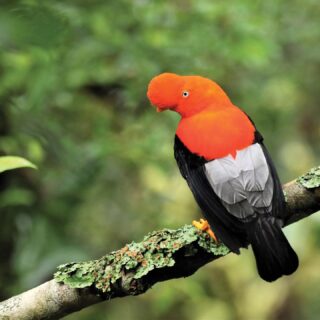 The morning is cool and a rainstorm seems inevitable today as clouds hang low over Villa Carmen Biological Station. Today is one of my last days as an artist-in-residence with Amazon Conservation and I’m anxious to retrieve my camera trap that I left a month ago in a dip in the trail on one of my favorite hikes. Trail nine is steep, gaining several hundred meters of elevation in under a kilometer. As I hike, macaws and parrots keep me company from tree tops, dropping fruit as they eat and chatter. As soon as I reach 800 meters I suddenly realize that I am hiking through clouds. This section of forest with its tall trees cloaked in mist is just magical.
The morning is cool and a rainstorm seems inevitable today as clouds hang low over Villa Carmen Biological Station. Today is one of my last days as an artist-in-residence with Amazon Conservation and I’m anxious to retrieve my camera trap that I left a month ago in a dip in the trail on one of my favorite hikes. Trail nine is steep, gaining several hundred meters of elevation in under a kilometer. As I hike, macaws and parrots keep me company from tree tops, dropping fruit as they eat and chatter. As soon as I reach 800 meters I suddenly realize that I am hiking through clouds. This section of forest with its tall trees cloaked in mist is just magical.
I make my way up to the small mirador and watch as waves of clouds move through the space obscuring and then revealing the bluish-green mountains and the confluence of rivers below. I spend time filming for my 360 video project, attaching the camera to trees hoping to relay the experience of this special scene. My primary project for my artist-in-residency is to pair 360 video with photos, camera trap images, audio and writing to re-create an immersive experience of what it’s like to be in the Amazon rainforest. As David Attenborough says, “No one will protect what they don’t care about; and no will care about what they have not experienced.” My hope is that this project will help others experience a bit of this amazing rainforest that has completely besotted me.

As I sit and spend a few more moments absorbing the beauty of this place, a mixed flock of birds flit between branches above me. I start photographing them and identify stunning Paradise tanagers, and even a Masked tanager, a new bird for me! Finally, I wind my way down from the mirador to the dip to discover what wildlife my camera trap has seen over the past month. I can hardly wait to hike back to the station to see what images will emerge.
As I return to my cabin, the wind has picked up and thunder rumbles nearby. I quickly cover my backpack and pull out my rain jacket and as I descend the trail, the rain arrives refreshing and clean. Halfway down the trail I hear the familiar whimper of capuchin monkeys. One large fellow eyes me warily before disappearing all the while calling out to his troupe.
Later when I put the camera trap card into the computer, I am swept away with pictures of jaguars, margays, pumas, jagarundis, pacas, agoutis, opossums and giant armadillos. While I hope one day to see some of the animals in person, it is enough to know they are out there, walking these same trails I did, protected and safe.





 The landscape shifts dramatically between Wayqecha and Villa Carmen, which means the birds who live in each habitat zone will change, too. Driving between the stations, the elevation drops from 9,875 to 1,700 feet. The birders will pass through puna, cloud/elfin forest, cloud forest, lower montane forest and premontane rainforest in the span of a day.
The landscape shifts dramatically between Wayqecha and Villa Carmen, which means the birds who live in each habitat zone will change, too. Driving between the stations, the elevation drops from 9,875 to 1,700 feet. The birders will pass through puna, cloud/elfin forest, cloud forest, lower montane forest and premontane rainforest in the span of a day.
 Today ACA’s
Today ACA’s  In just three years, Villa Carmen has established itself as a bustling hub for scientists and conservationists. Over 150 researchers have visited the station from institutions around the world, cataloguing more than 590 species of plants and animals, and leading 38 research projects to date, studying everything from native fish and
In just three years, Villa Carmen has established itself as a bustling hub for scientists and conservationists. Over 150 researchers have visited the station from institutions around the world, cataloguing more than 590 species of plants and animals, and leading 38 research projects to date, studying everything from native fish and  Villa Carmen is also a living laboratory for best practices in sustainable agriculture, and shares lessons learned with residents from surrounding communities. Villa Carmen grows its own local organic crops, while researchers study ways to enhance soil fertility using biochar. Last year, Villa Carmen hosted an international workshop on sustainable agriculture where world experts and local Amazonian farmers shared techniques and experiences.
Villa Carmen is also a living laboratory for best practices in sustainable agriculture, and shares lessons learned with residents from surrounding communities. Villa Carmen grows its own local organic crops, while researchers study ways to enhance soil fertility using biochar. Last year, Villa Carmen hosted an international workshop on sustainable agriculture where world experts and local Amazonian farmers shared techniques and experiences. Villa Carmen’s
Villa Carmen’s  Innovations in Biochar
Innovations in Biochar